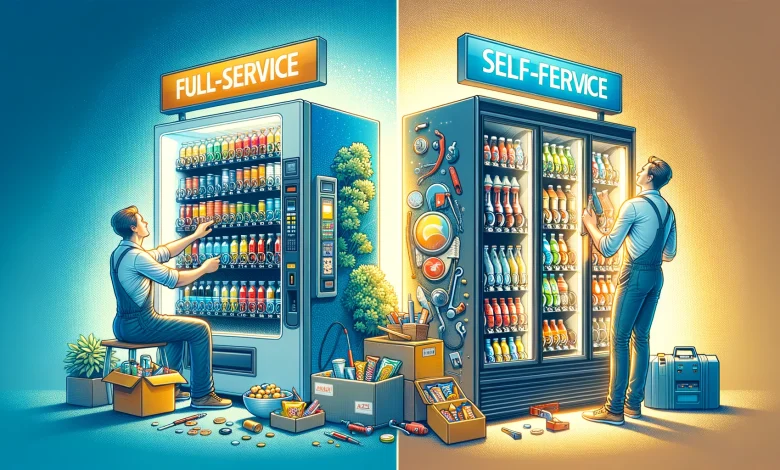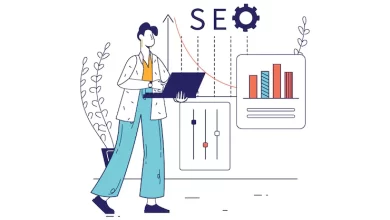Servicing Vending Machines: Full-Service vs Self-Fill

It might be difficult for a firm to know where to begin when integrating vending machines. Companies who want to vend must decide between “self-fill” vending, which means they own their own machine and keep all revenues, and “full-service” vending, which involves regular servicing and equipment provision from a firm such as a vending management company. The expenses and earnings are the primary factors to compare the two solutions. Do you want free equipment and servicing, or do you want to buy and maintain your own machine? Depending on your needs, maintaining a vending machine doesn’t have to be difficult.
Intelligent Vending Machines are sophisticated self-service kiosks outfitted with state-of-the-art features like data analytics, machine learning, and artificial intelligence. These devices improve the whole vending experience by analyzing customer behavior, monitoring inventory levels in real-time, and tailoring product offers depending on user preferences. These devices transform conventional vending methods by using intelligent features that increase profitability, boost sales, and provide insightful data to enterprises.
Self-fill vending: What Is It?
Possessing your own machine, choosing every product, and handling sales all have advantages, but they also come with a significant learning curve and work commitment. A selection of the styles and sizes available for vending machines may be seen in our vending machine size guide. Additionally, a vending machine may be filled with a wide range of goods. For the sake of this essay, we will examine a glass-front machine, namely a Coca-Cola – RVV 700, that will be loaded with Coca-Cola items in order to thoroughly compare the expenses of self-fill vending versus full-service vending.
Depending on whether they are new or reconditioned, glass front vending machines may cost anywhere from $3000 to $5000 in total, not including delivery. Understanding the interests and preferences of your average consumer is crucial when choosing products for your machine. Glass front vending machines may contain anywhere from twelve to fifteen cases of goods. Assuming we choose a few common Coca-Cola brands, the machine’s first stocking should cost between $250 and $400.
The estimation is predicated on purchasing a range of 20-ounce bottles of carbonated soda, juice, and sports drink straight from the Coca-Cola bottler. While some companies choose to purchase goods from wholesale clubs, it might be challenging to locate the necessary flavors or 20-ounce bottles.
Maintaining and Replending Self-Fill
Additional features of self-fill vending that companies need to think about include restocking and expiring items. When a company has its own vending machine, it is in charge of routinely replenishing and restocking the machine. It is thus crucial to verify the dates of the product that is still in the machine. The shelf life of carbonated and non-carbonated canned and bottled drinks, such as Gatorade,
Coca-Cola, Pepsi-Cola, Diet Coke, VitaminWater, PowerAde, and so on, is normally between ninety and one hundred days. If you’re looking for a snack machine, food goods may have an even lower shelf life. Products may not be bought in time and might expire in the machine, depending on how often consumers use the machine. The worker restocking the machine bears the loss because they take out the expired goods. In a similar vein, the company bears liability for any machine damage or mechanical problems.
For vending machine operators, a computerized application called a Vending Machine Inventory App simplifies inventory management. With the help of this software, operators may minimize out-of-stock situations and ensure prompt replenishing by tracking stock levels, tracking product sales in real-time, and generating automatic replenishment notifications. These applications improve operational efficiency and raise the profitability of vending machine business entities by offering insightful data on inventory performance.
Maintaining and Replending Complete-Service Vending
On the other hand, full-service vending does not need your hands. The equipment, continuous maintenance, and mechanical repairs are all provided by the operator at no cost. The operator often gives the company a commission based on monthly or quarterly sales in return for the business giving the machine space and power to function. Full-service vending is an excellent choice for companies looking to boost revenue and provide the convenience of managing vending without the burden.
Revenue-Related Factors
The number of onsite workers and patrons who use the machine, its location, the frequency of technical or mechanical problems with the machine, and the range of products available are just a few of the variables that affect how much money a vending machine can make. With self-fill vending, on the other hand, all profits—whether they amount to a few hundred or several thousand dollars—go straight to your company. The equipment, product, and service expenses are borne by the firm, thus it’s critical to subtract these from sales in order to calculate your actual profit. Another item covered in this Vending Group article is accounting for this increased income.
The main distinction with full-service vending is that an experienced operator, who frequently installs software on the machines to track when service is required, handles machine management, saving the business money. All other factors still affect revenue potential. The operator pays for the product, service, and equipment, so when the company gets its commission check, it’s all profit and no labor involved.
The term Software Vending describes the practice of delivering software licenses or items via internet platforms or automated vending machines. With this technique, consumers may easily buy and download software, often with quick access and activation. Software vending machines are located at retail establishments, airports, and other public areas. They provide clients with a rapid and effective means of obtaining software items without using conventional physical distribution techniques.
In contrast
When comparing the expenses of self-serving to full-service vending, in our case of the glass front machine, the costs would be nil for machine purchase, shipping, stocking, and maintenance. Although it may seem untrue, vending management businesses provide free machine installation, free machine stocking, and free maintenance services. As a result, the company that enrolled in vending management will only get a portion of the machine’s commission.
The volume of business your machines generate determines how much money your company will make. The company is still in charge of deciding what kind of machine to put at their site and what goods to put in those machines. We have another post that provides a deeper explanation of the idea if you’d want to know more about the procedure for employing a vending management firm.





